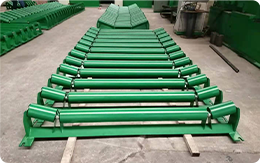 Afrikaans
Afrikaans  Albanian
Albanian  Amharic
Amharic  Arabic
Arabic  Armenian
Armenian  Azerbaijani
Azerbaijani  Basque
Basque  Belarusian
Belarusian  Bengali
Bengali  Bosnian
Bosnian  Bulgarian
Bulgarian  Catalan
Catalan  Cebuano
Cebuano  Corsican
Corsican  Croatian
Croatian  Czech
Czech  Danish
Danish  Dutch
Dutch  English
English  Esperanto
Esperanto  Estonian
Estonian  Finnish
Finnish  French
French  Frisian
Frisian  Galician
Galician  Georgian
Georgian  German
German  Greek
Greek  Gujarati
Gujarati  Haitian Creole
Haitian Creole  hausa
hausa  hawaiian
hawaiian  Hebrew
Hebrew  Hindi
Hindi  Miao
Miao  Hungarian
Hungarian  Icelandic
Icelandic  igbo
igbo  Indonesian
Indonesian  irish
irish  Italian
Italian  Japanese
Japanese  Javanese
Javanese  Kannada
Kannada  kazakh
kazakh  Khmer
Khmer  Rwandese
Rwandese  Korean
Korean  Kurdish
Kurdish  Kyrgyz
Kyrgyz  Lao
Lao  Latin
Latin  Latvian
Latvian  Lithuanian
Lithuanian  Luxembourgish
Luxembourgish  Macedonian
Macedonian  Malgashi
Malgashi  Malay
Malay  Malayalam
Malayalam  Maltese
Maltese  Maori
Maori  Marathi
Marathi  Mongolian
Mongolian  Myanmar
Myanmar  Nepali
Nepali  Norwegian
Norwegian  Norwegian
Norwegian  Occitan
Occitan  Pashto
Pashto  Persian
Persian  Polish
Polish  Portuguese
Portuguese  Punjabi
Punjabi  Romanian
Romanian  Russian
Russian  Samoan
Samoan  Scottish Gaelic
Scottish Gaelic  Serbian
Serbian  Sesotho
Sesotho  Shona
Shona  Sindhi
Sindhi  Sinhala
Sinhala  Slovak
Slovak  Slovenian
Slovenian  Somali
Somali  Spanish
Spanish  Sundanese
Sundanese  Swahili
Swahili  Swedish
Swedish  Tagalog
Tagalog  Tajik
Tajik  Tamil
Tamil  Tatar
Tatar  Telugu
Telugu  Thai
Thai  Turkish
Turkish  Turkmen
Turkmen  Ukrainian
Ukrainian  Urdu
Urdu  Uighur
Uighur  Uzbek
Uzbek  Vietnamese
Vietnamese  Welsh
Welsh  Bantu
Bantu  Yiddish
Yiddish  Yoruba
Yoruba  Zulu
Zulu Understanding V-Belt Drive Systems and Their Pulley Mechanics for Efficient Power Transmission
Understanding V-Belt Drive and Pulleys
V-belt drive systems are an essential component in various mechanical applications, ranging from industrial machinery to automotive engines. They provide an efficient means of transferring power from one component to another. This article will delve into the workings of V-belt drives, their construction, and their advantages in different scenarios.
What is a V-Belt Drive?
A V-belt drive consists of a V-shaped belt that runs over two or more pulleys. The unique cross-section of the belt allows it to fit snugly into the grooves of the pulleys, creating a powerful grip that facilitates energy transfer. This design minimizes slippage while maximizing frictional force, enabling efficient power transmission.
V-belts are commonly made from durable materials such as rubber or synthetic compounds, reinforced with fabrics or steel cords to withstand high levels of tension and abrasion. The dimensions, length, and profile of the belt are critical factors, influencing the efficiency and effectiveness of the drive system.
Components of V-Belt Drive Systems
1. Pulleys Pulleys are the rotating wheels that provide the surface for the V-belt to ride on. They come in various sizes and configurations, including single and multiple groove designs. The diameter and construction of the pulley affect the system's torque and speed. Larger pulleys generally translate to higher torque output, while smaller pulleys can increase speed.
2. Belt The V-belt itself is the heart of the drive system. Its V-shape allows it to fit securely in the pulley grooves, and it is designed to withstand significant wear and tear. There are different types of V-belts, including classical, narrow, and wrapped belts, each with specific applications.
3. Tensioning System Proper tension in the V-belt is vital for optimal performance. A tensioning system, which may include manual or automatic adjustment mechanisms, ensures the belt maintains the right amount of tension, preventing slip and prolonging its lifespan.
Advantages of V-Belt Drives
V-belt drives offer several benefits, making them a popular choice in various mechanical applications
v belt drive pulley

1. High Efficiency V-belt drive systems are known for their high efficiency, often exceeding 90%. This means less energy is wasted in the form of heat, translating into better overall performance.
2. Compact Design The compact nature of V-belt drives allows for more flexible configurations in machinery. This versatility is particularly advantageous in spaces with limited room for larger drive systems.
3. Cost-Effectiveness V-belts are typically more affordable than other types of drive systems, such as chain drives. Their relative ease of installation and maintenance further enhances their cost-effectiveness.
4. Vibration Dampening V-belts naturally absorb vibrations, reducing noise and preventing shock loads to the machinery. This quality contributes to smoother operation and can extend the life of the equipment.
5. Ease of Replacement In the event of wear or damage, V-belts can be replaced relatively easily without requiring complex tools or procedures, allowing for minimal downtime in production.
Applications of V-Belt Drives
V-belt drives are widely used in various applications, including
- Automotive Engines They transfer power from the crankshaft to components like the alternator, water pump, and air conditioning compressor. - Industrial Machinery In manufacturing settings, V-belt drives are integrated into conveyor systems, pumps, and fans. - Agricultural Equipment Tractors and other farming machinery utilize V-belt drives to operate various attachments and implements.
Conclusion
V-belt drive systems and pulleys play a critical role in mechanical power transmission. Their design, efficiency, and versatility underscore their importance in many industries. As technology advances, the modifications and innovations in V-belt and pulley systems are likely to enhance their applications even further, ensuring they remain a staple in mechanical engineering for years to come.
-
Revolutionizing Conveyor Reliability with Advanced Rubber Lagging PulleysNewsJul.22,2025
-
Powering Precision and Durability with Expert Manufacturers of Conveyor ComponentsNewsJul.22,2025
-
Optimizing Conveyor Systems with Advanced Conveyor AccessoriesNewsJul.22,2025
-
Maximize Conveyor Efficiency with Quality Conveyor Idler PulleysNewsJul.22,2025
-
Future-Proof Your Conveyor System with High-Performance Polyurethane RollerNewsJul.22,2025
-
Driving Efficiency Forward with Quality Idlers and RollersNewsJul.22,2025





























